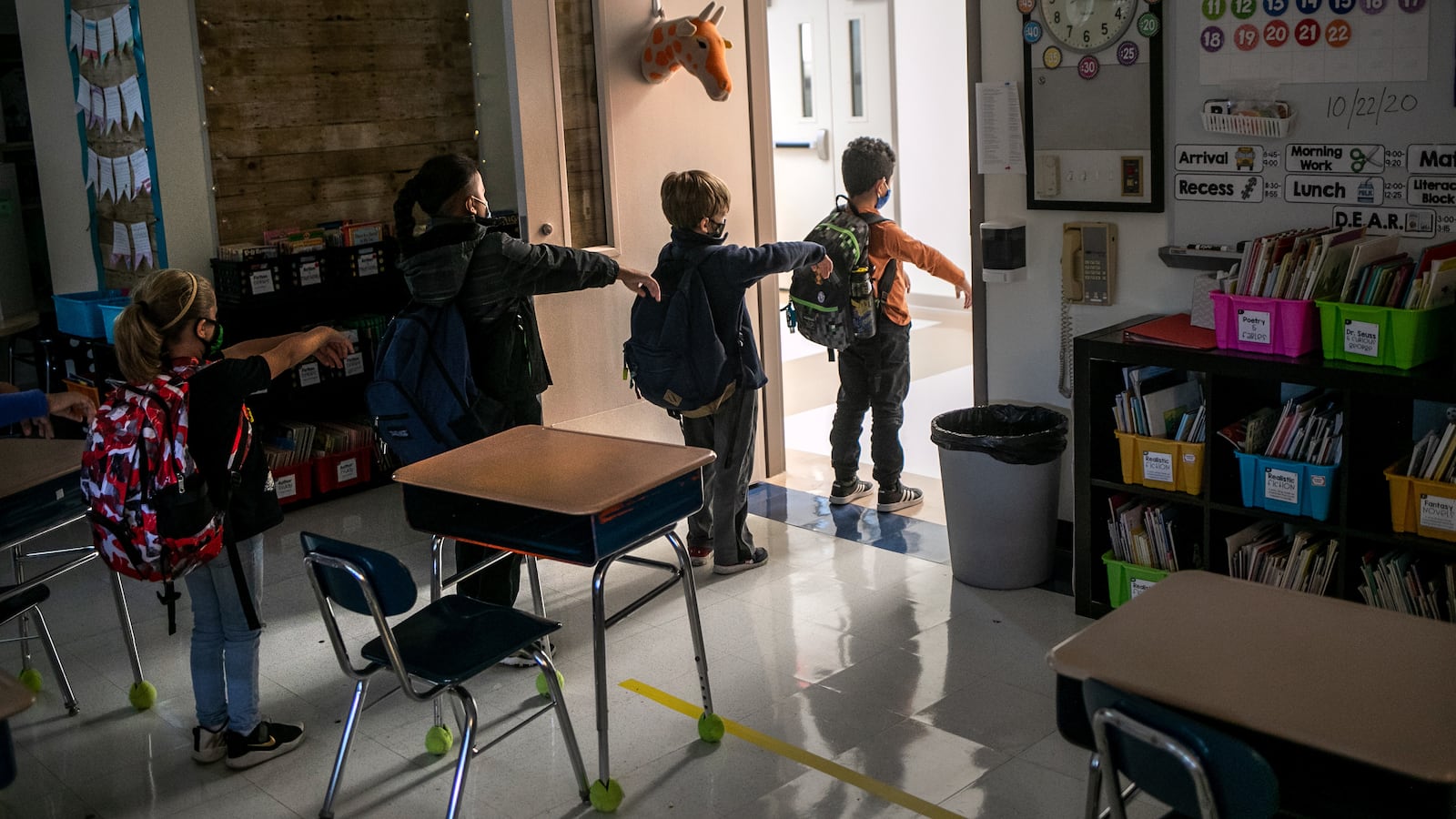A teacher in Newark trudges through the snow to find students who haven’t logged into her all-remote class, a sad ritual of tracking down teens that began for her last March.
A student in Indiana gets the lead role in her school musical — only to rehearse over Zoom after she’s quarantined.
An alternative high school in Brooklyn grapples with twin crises: the death of their principal and how to keep students who have previously struggled on track during remote learning.
On the first anniversary of a cascade of nationwide school shutdowns, Chalkbeat is looking back on this toughest of years in education through those who experienced it firsthand: educators, counselors, students, parents. Some of them will be familiar to our readers, compelling figures we met early in the pandemic who we wanted to revisit. Others we have met since and felt their stories powerfully spoke to this remarkable year.
School during the pandemic looks different for every district, every school, every family. For some there are plexiglass dividers and face shields; for others, Zoom and Google Classroom. Where one teacher eagerly attends class in person, another is filled with fear. The random testing, the grading systems, the hybrid schedules vary wildly. But one thing unites them all — school as we know it has been completely transformed.
The first inkling of how vastly American education would be disrupted by the pandemic came during a Feb. 25 Centers for Disease Control press availability. It was almost an afterthought, really. Nancy Messonnier, a CDC director, was spelling out “non pharmaceutical interventions” to prevent the spread of the novel coronavirus when she suggested Americans talk to their school about plans for dismissals or closures.
“Ask if there are plans for teleschool,” she said. “I contacted my local school superintendent this morning with exactly those questions.”
Just two days later, Bothell High School in Washington state became the first school in the U.S. to shut down.
Last spring, Chromebooks and iPads suddenly became as much a part of students’ daily lives as chalkboards and notebooks. Terms like live instruction, asynchronous learning, and Zoom bombing were suddenly part of everyday education parlance. Graduations were canceled, standardized tests were scrapped, grading systems were upended. A reality that reopening school buildings would require masks, distance, plexiglass, and money — lots of money — was setting in.
Just as the virus has taken a greater toll on communities of color, education disparities emerged almost immediately as well. The digital divide created inequity from the start, with some students struggling to attend virtual classes while sharing devices, relying on unreliable internet, or without a device at all. When jobs evaporated, families were left worrying about having enough food for their children and whether they would need to suddenly leave their homes. While wealthy families created pandemic pods and hired private teachers, other parents who worked outside of the home had to scramble for care.
In the darkest days, educators stepped up in creative, inspiring ways. Teachers dropped free school meals off at their students’ homes so fearful parents didn’t have to stand in lines. Educators who are parents themselves juggled teaching while overseeing their children’s remote learning. Teachers mailed homework packets and arranged device drop-offs.
Once schools began reopening, the divisions deepened. Districts with mostly white students were more likely to be open for some in-person learning. In some large cities that offer in-person school, the majority of families have declined seats and opted for virtual — particularly families of color who are more likely to be impacted by the virus and whose trust in schools has been eroded. Meanwhile, enrollment has dropped in districts and states across the country, especially as parents found other options for their youngest children, a trend that could shape budgets and enrollment trends for years to come.
As the year anniversary of shutdowns approaches, the debate over whether and how schools should reopen continues to roil. Some studies show schools aren’t major sources of transmission, as long as the larger community’s rates aren’t high and precautions are taken. The Centers for Disease Control and Prevention’s new guidance urged districts to reopen full-time where community spread is low or moderate — and even where it’s high with enough testing.
Meanwhile, all sides of the complicated debate worry about the long-term impact on students and how teachers will make up for learning loss. Ideas abound for how to address these two disrupted years, from an influx of federal money to longer school days to widespread tutoring programs.
While some districts are still struggling with whether and how to reopen this spring, others have their sights set on the fall, particularly with teachers across the country getting vaccinated. For some schools, there will be a super-charged summer school. For others, an early back-to-school date. And some administrators already feel certain some form of hybrid or virtual learning is here to stay.
A year into the pandemic, coronavirus is still here, and most schools are very far from normal. Parents, teachers, and students are struggling with the disruptions to learning. There is fear and, for many, there is grief. Intense disagreements about reopening persist, and divisions have been unearthed that won’t disappear with vaccinations. But many people are now pulling in the same direction and united in a common goal: how to give students the support they need and how to make school better.
If you are having trouble viewing this form on mobile, go here.


